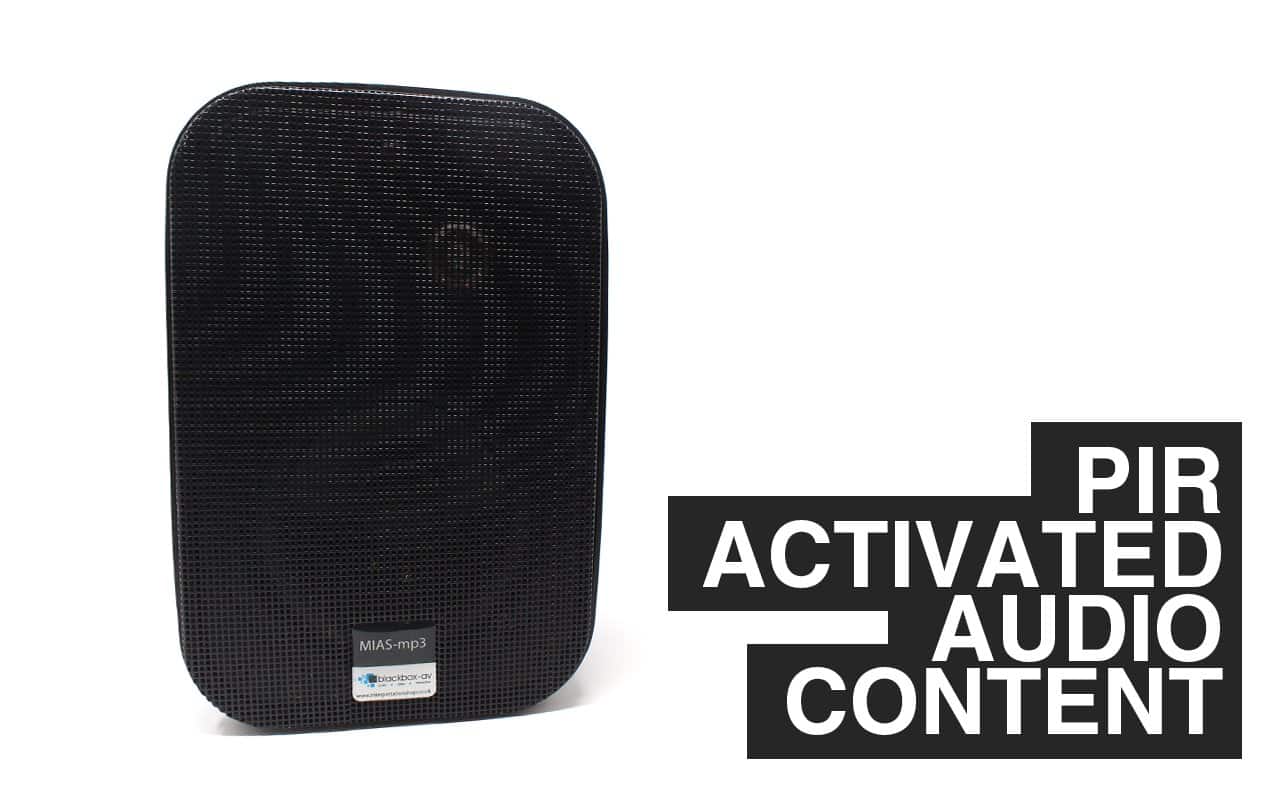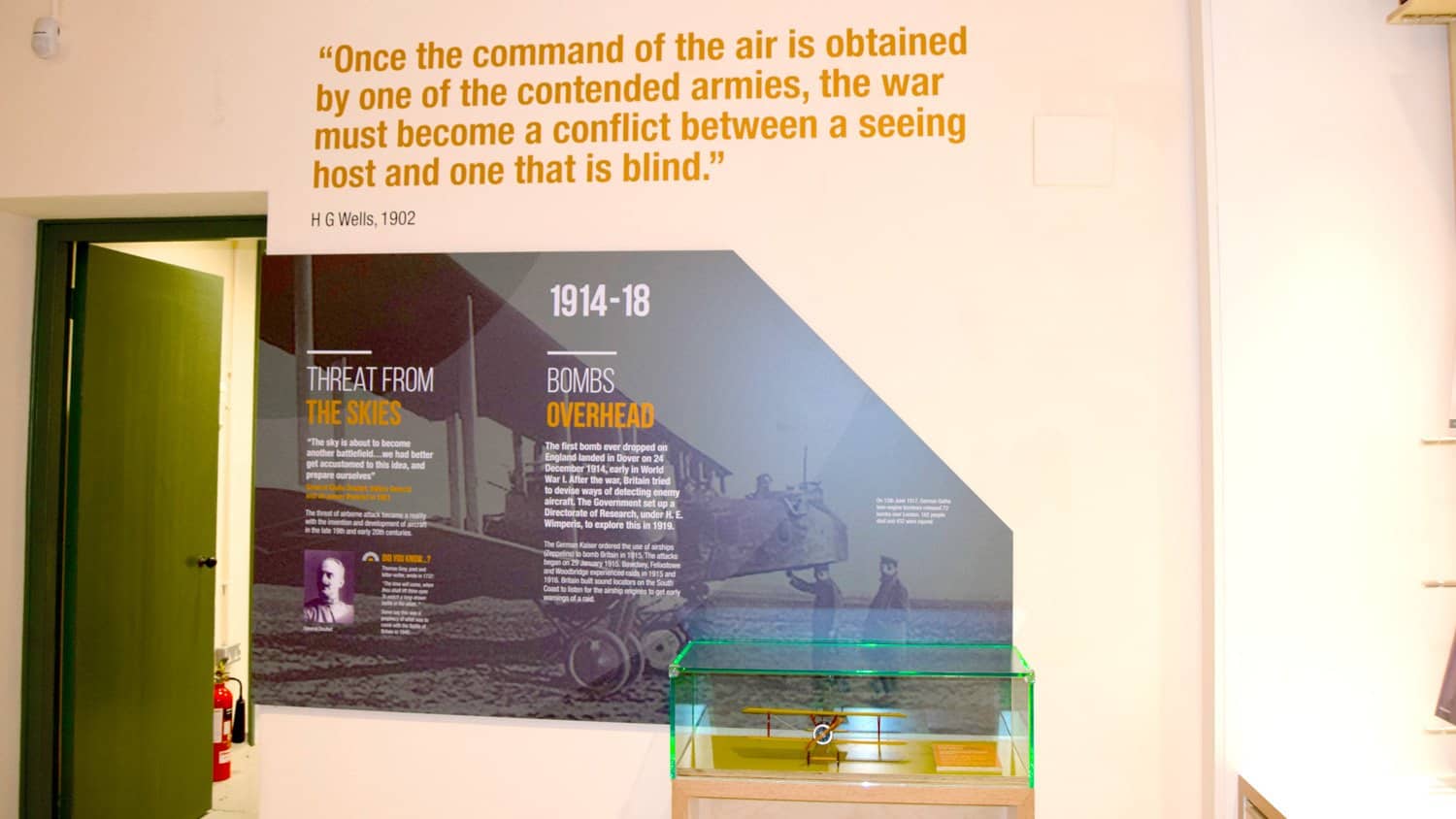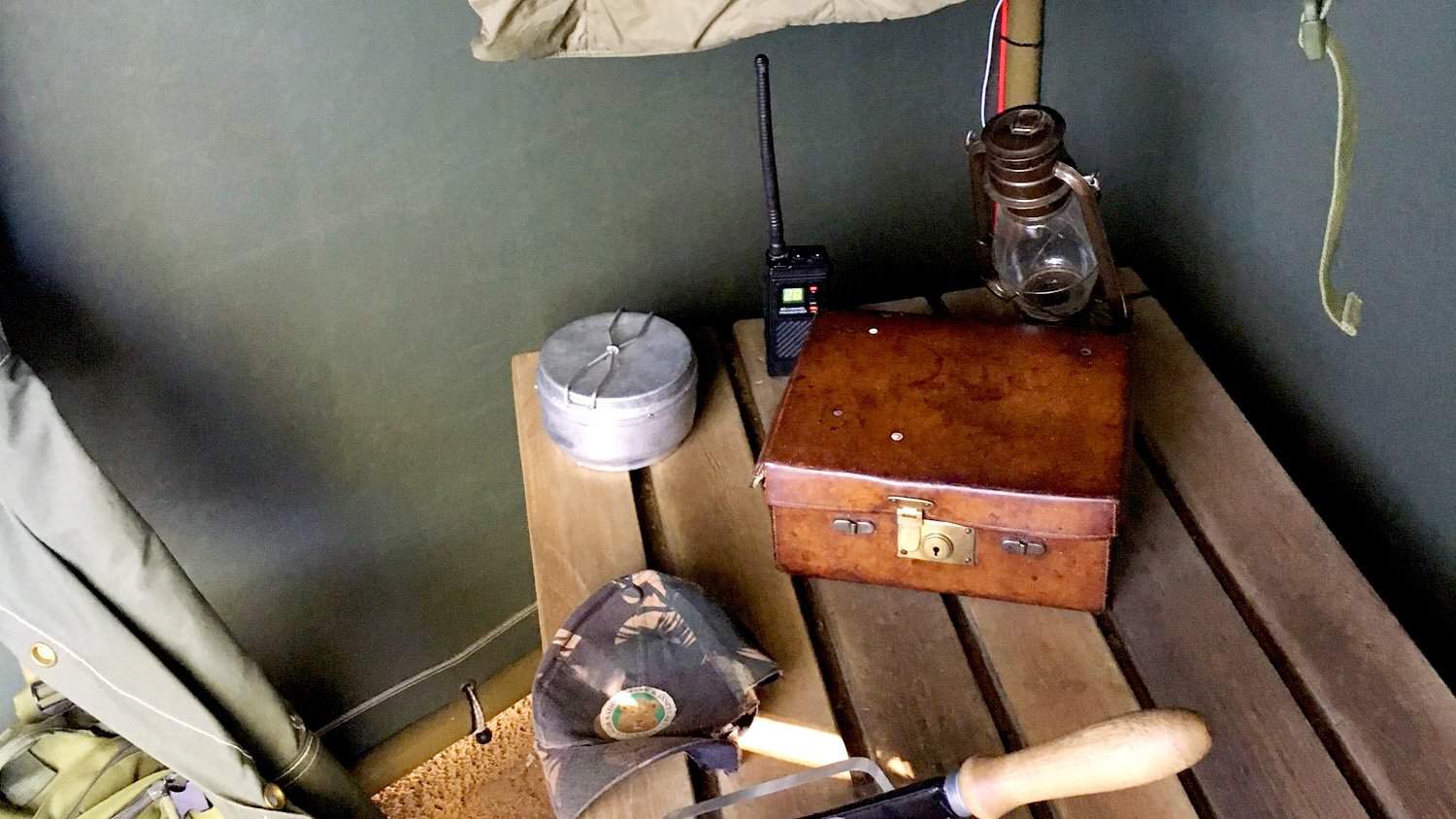
A simple but very effective method of audio interpretation is using PIR activated audio content (this can easily be done via a motion activated audio/sound player). So, what is a PIR? Short for Passive Infrared, PIR sensors measure the temperature of its surroundings through infrared radiation given off by objects and people. When an infrared source, such as a person, moves in front of a source with a different temperature, such as a wall, the sensor detects this difference and uses it as a trigger for whatever device it may be attached to.
The beauty and convenience of a PIR sensor is that it does not require a direct physical interaction as does a button or touch screen interface and it does not have to be taught to recognise input from a person’s voice or motions which can vary greatly between individuals.

There are several benefits to using a Large PIR sensor such as this (can be seen in the top left corner in the image above). Power for example. A device can go into standby mode, rather than playing on a loop, until someone walks past it ensuring that power is only used when there is someone there to enjoy the content. It also adds an element of surprise. If you enter a room where there is audio playing constantly on a loop in the background, you can quickly become bored of it as well as overly aware of its presence. Imaging walking through a silent room and as you walk past an exhibit, a PIR activated sound effect or message begins to play, breaking the silence and taking your full attention towards the exhibit.
A recent example of this was our installation at Bawdsey Radar Trust, Suffolk where we utilised a PIR sensor installed at the very beginning of the visitor centre, where visitors hear the announcement of “a call to war” when they step in. Once the PIR detects movement, it sends a signal to a motion activated audio player that then triggers the audio track. This immediately sets the tone for the visitor centre and the interpretation that follows it.

Their size is also of great benefit. A pressure sensor for example, it needs to be large enough to accommodate a person standing or sitting on it, whilst a keyboard needs the space to hold it and a touchscreen needs dedicated spaces for interaction, reducing space for visuals. The PIR’s we supply are compact and easy to install only requiring a hole large enough for the sensor to detect through and their detection zone can be altered from broad to narrow allowing you to select the region in which playback can be triggered. In the Forest Guard Hut of London Zoo’s Land of the Lions enclosure, a walkie-talkie can be seen in one corner of the room, which has a small PIR sensor installed inside it. The PIR is activated once a visitor enters the hut. Audio is then triggered from a motion activated audio player.
PIRs are perfect for use with audio as they do not require a person to direct their visual attention to one place or to remain stationary. Sensors, due to their compact nature, can be installed in virtually any space with speakers positioned where desired allowing content to be heard whilst still moving through an exhibit. They could also be combined with directional speakers which play sound in a targeted space allowing for a motion activated, personal audio experience. As both speakers and motion sensors can be installed discretely, a visitor can experience audio within a seamless environment with no mechanisms to distract them from their surroundings.
We produce products which work with PIR sensors in the delivery of audio content and have found them a great success. Our SoundClip Audio Player range (which can be used as a motion activated audio player) is designed to work with various input types for the activation of audio content whilst our Message in a Speaker range is a range of contained audio playback systems which activate when a person walks in front of them, playing content from an onboard SD card. Our Message in a Speaker, along with the micro version, has been used in several of our installations and is a favourite among our clients.

Our Micro Message in a Speaker features in the Hidden Now Heard exhibition that was spearheaded by Mencap Cymru, the leading disability charity in Wales. As part of the exhibit, our Message in a Speaker was used alongside a PIR sensor which would play the sound of a toilet flushing when visitors entered a small area to read the informative signage. The Message in a Speaker is a great AV choice, as the unit includes both a sensor and a motion activated audio player.

So, that was our post all about how PIR activated audio content can be very effective for any public space. If you want to know more about our range or PIR sensors and any other audio visual interpretation, head over to our contact page to get in touch with our team or you can visit our online shop to see the full range.


Hi – could you let me know the cost of the message in a speaker product, it’s lead in time and the number available, thanks
Simon Clarke
Hi Simon,
The MIAS can be purchased from our online store the lead time is just 2 days as this is a stock item.
The MIAS Micro is £99: https://www.interpretationshop.co.uk/product/message-in-a-speaker-pos-micro/
The MIAS standard is £295: https://www.interpretationshop.co.uk/product/message-in-a-speaker-mias-v2/
If you have any other questions please just get in touch!